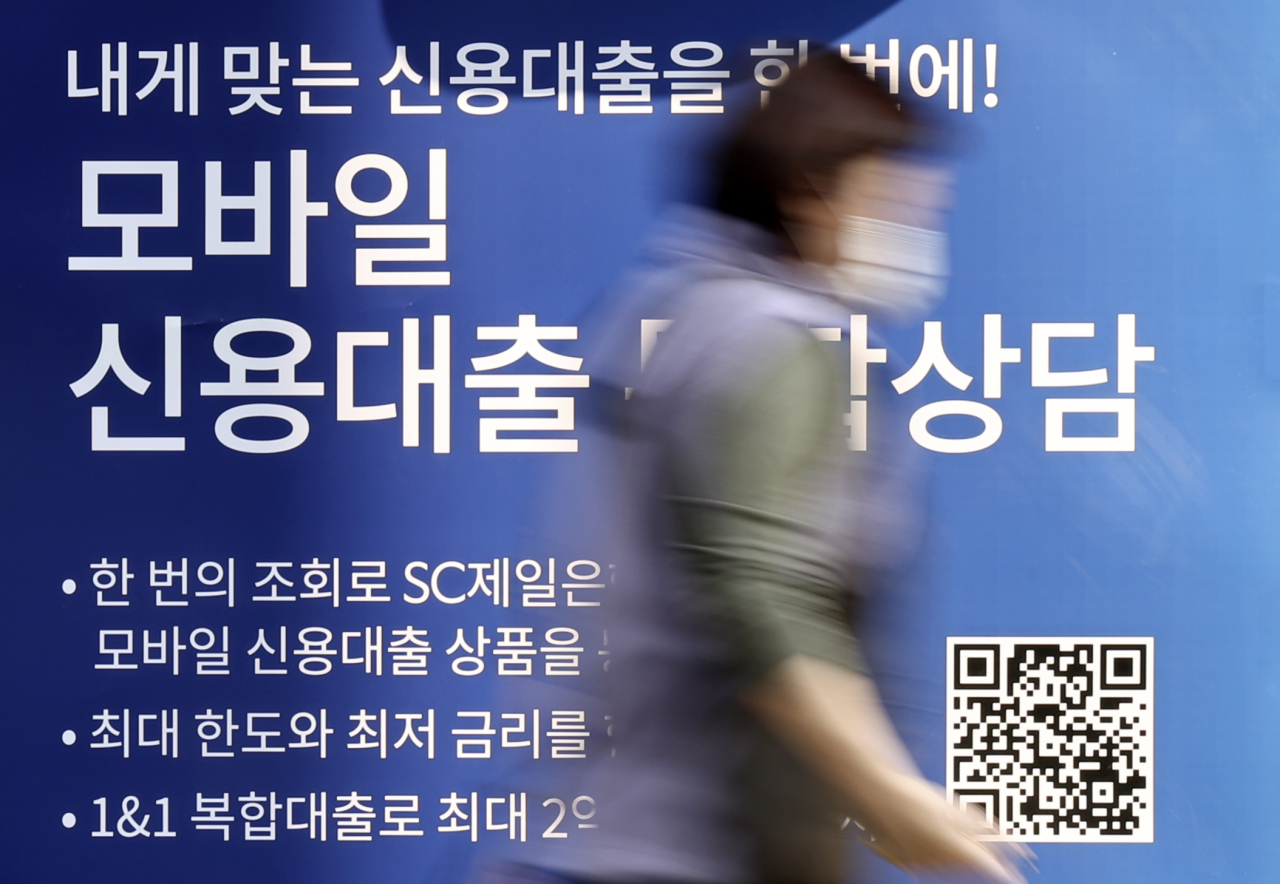 |
A pedestrian passes by a local bank in Seoul advertising its loan product, in this photo taken on Feb. 11. (Yonhap) |
South Korean households and businesses are at a bigger risk of default compared with previous financial crises, with the pandemic having driven up the pace of borrowing gain, the central bank warned Wednesday.
The nation’s real credit gap rate -- the difference between the desired and actual levels of debt for households and businesses -- came to 5.1 percent as of the end of September last year, a Bank of Korea report showed.
This surpasses the corresponding figures for the credit card crisis here in 2002 and the 2008 global financial crisis, which came at 3.4 percent and 4.9 percent, respectively. Korea’s 2002-2003 credit card crisis left several card issuers on the brink of collapse as they failed to deal with an excessive card lending boom.
Following the outbreak of the COVID-19 pandemic here in early 2020, the growth of household and corporate debt has surpassed the pace of expansion of the real economy, leading to a financial vulnerability, according to the central bank.
“The total volume and the growth pace of domestic credit are at a higher level compared with past financial crises,” an official at the BOK’s financial stability department explained in a briefing tied to the report.
Financial authorities advised banks to adopt stricter lending rules last year to rein in the pace of household debt growth. The increase in credit gained momentum after the BOK slashed its benchmark interest rate to a record low of 0.5 percent in May 2020 to cushion the economy from the effects of the pandemic. The central bank’s benchmark interest rate now stands at 1.25 percent, after it delivered its third pandemic-era rate hike in January.
Korea’s household debt hit a fresh high in the fourth quarter of last year, a separate February data from the BOK showed, with the total credit amounting to 1,862.1 trillion won ($1.56 trillion won) as of end-December, gaining 1 percent or 19.1 trillion won on-quarter.
Local banks are also currently burdened with the possibility of borrowers defaulting after massive loans were extended to the self-employed and small business owners through government-backed programs. As of the end of September last year, the total value of debt extended to the self-employed and small business owners came to 887.5 trillion won, gaining 29.6 percent on-year, data compiled by local think tank Korea Small Business Institute showed Wednesday.
The BOK’s data comes amid growing concerns over stagflation -- slow economic growth coupled with rising inflation and high unemployment -- with surging global oil prices and the weakening value of won against the dollar.
Affected by the US’ recent ban on Russian fossil imports, including oil, in response to Moscow’s invasion of Ukraine, West Texas Intermediate Crude on Tuesday (Eastern Standard Time) settled 3.6 percent higher at $123.7 per barrel. Brent crude oil, the international benchmark, ended 4.3 percent higher at $123.21 per barrel in the same period.
The won weakened against the US greenback for three consecutive trading days, surpassing the 1,230 won-mark for the first time since May 2020 and settling at 1,237 won at the end of Tuesday. It was trading at 1,235.5 won per dollar late Wednesday.
“Due to concerns of stagflation, the won has weakened against the dollar and foreigners have been offloading Korean stocks,” Kim Seok-hwan, an analyst at Mirae Asset Securities said.
By Jung Min-kyung (
mkjung@heraldcorp.com)








![[Weekender] Korea's traditional sauce culture gains global recognition](http://res.heraldm.com/phpwas/restmb_idxmake.php?idx=644&simg=/content/image/2024/11/21/20241121050153_0.jpg)